Schizophreniform Disorder: Schizophrenia-Like Symptoms of Shorter Duration
Understanding a Shorter Spectrum of Psychosis

Exploring the Clinical Landscape of Schizophreniform Disorder
Schizophreniform disorder is a fascinating and complex psychiatric condition characterized by symptoms closely resembling those of schizophrenia but distinguished primarily by its shorter duration. It presents a vital window into the early stages and possible progression of psychotic illnesses, and understanding it is crucial for timely intervention and management. This article delves into the clinical features, diagnostic criteria, causes, treatment options, and prognosis of schizophreniform disorder, providing a comprehensive overview rooted in current psychiatric research and diagnostic standards.
Clinical Features of Schizophreniform Disorder
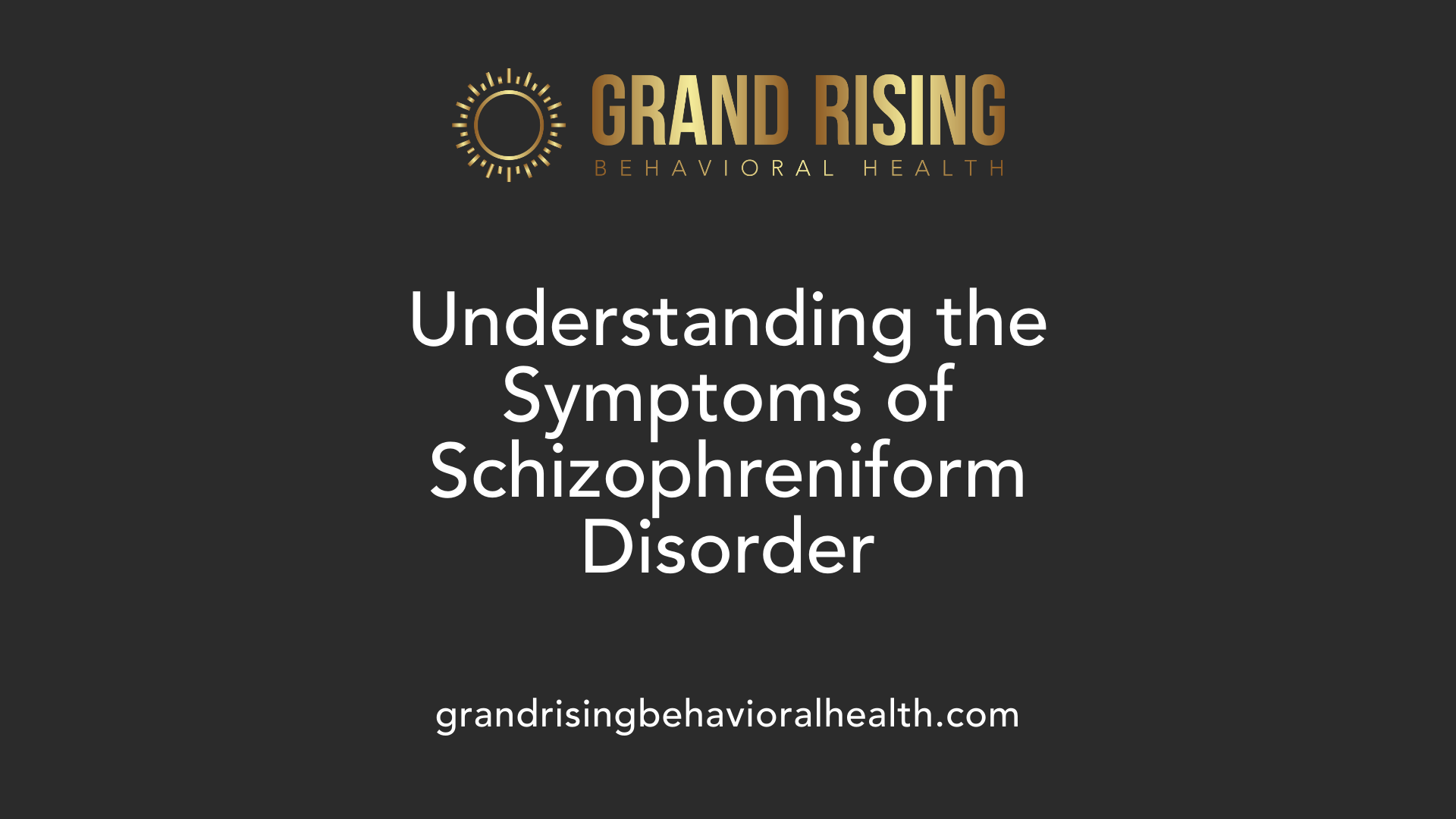
What are the clinical features of schizophreniform disorder?
The clinical features of schizophreniform disorder include symptoms that closely resemble those of schizophrenia. Patients often experience delusions, hallucinations, disorganized speech, and abnormal motor behaviors such as catatonia or disorganized mannerisms. Negative symptoms like diminished emotional expression, social withdrawal, and lack of motivation are also common.
One of the defining aspects of this disorder is its duration. Symptoms must last at least one month but less than six months. The onset can be sudden, which often helps distinguish it from the typically more gradual development of schizophrenia.
The impact on daily functioning can be significant. Individuals may have difficulties maintaining relationships, holding a job, or managing self-care tasks due to their symptoms. These disruptions highlight why early diagnosis and intervention are essential.
Treatment generally includes antipsychotic medications to manage psychotic symptoms and psychotherapy to support recovery. Early treatment improves the likelihood of full remission, especially since the disorder is often transient, with many patients recovering fully within the expected timeframe.
Diagnostic Criteria and Differentiation from Other Disorders
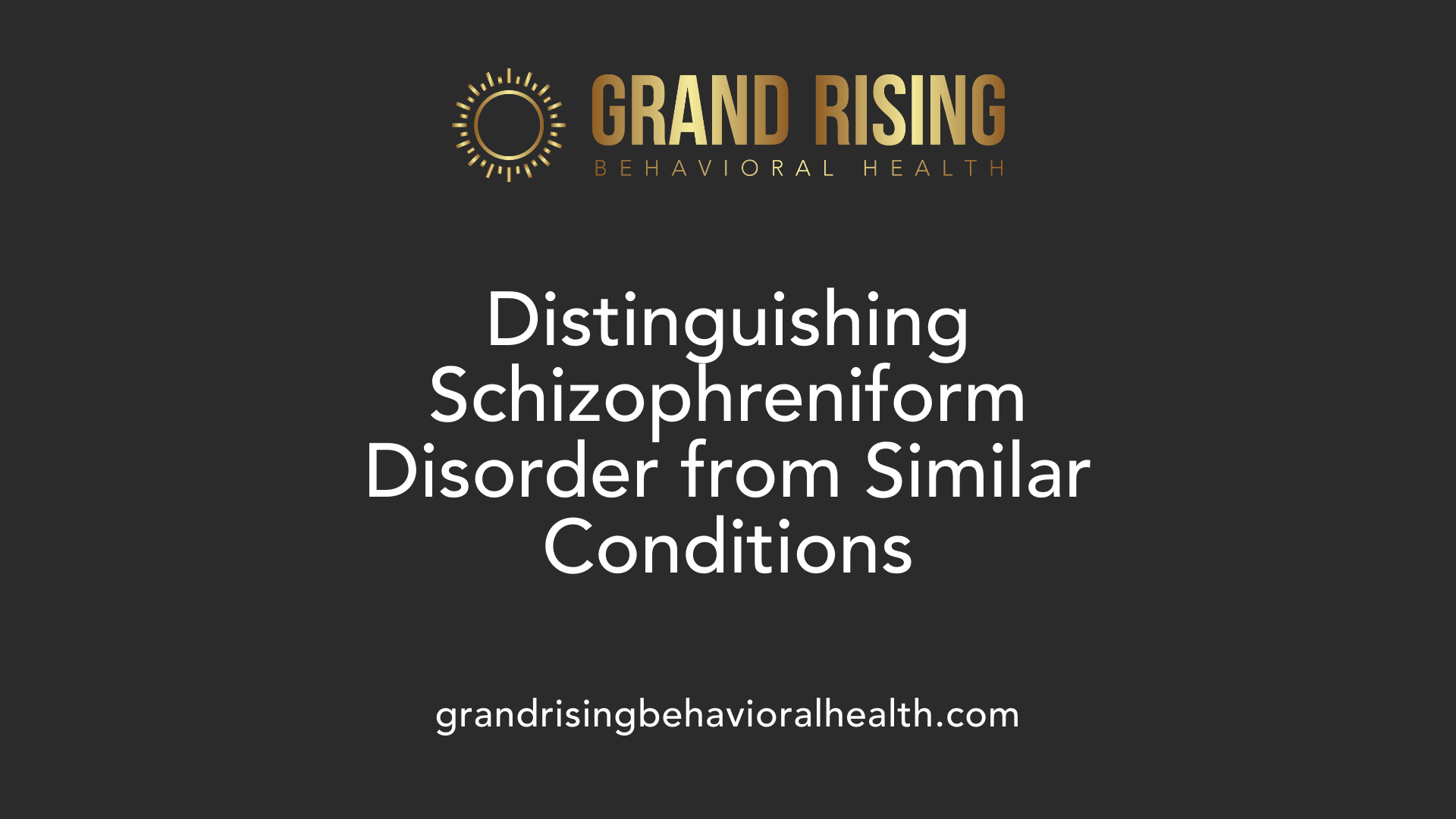
What are the diagnostic criteria for schizophreniform disorder according to DSM-5?
DSM-5 specifies that to diagnose schizophreniform disorder, a person must have at least two symptoms characteristic of schizophrenia, such as delusions, hallucinations, disorganized speech, grossly disorganized or abnormal motor behavior, or negative symptoms. These symptoms should occur during a 1-month period. Importantly, at least one of the symptoms must be delusions, hallucinations, or disorganized speech. The episodes must last more than one month but less than six months.
The diagnosis rules out other conditions—such as schizoaffective disorder, mood disorders with psychotic features, substance-induced psychosis, or other medical conditions—as the primary cause of the symptoms. The presentation often involves a rapid onset and can include specifiers for a good prognosis, such as early onset, good functioning before symptoms, and confusion during episodes, which suggest a better outlook.
This diagnosis emphasizes the duration and the presence of core psychotic features within the specified timeframe, distinguishing it from other psychotic disorders.
How can schizophreniform disorder be distinguished from brief psychotic disorder?
The main difference between schizophreniform disorder and brief psychotic disorder hinges on how long the symptoms last. Brief psychotic disorder involves the sudden appearance of psychotic symptoms such as delusions, hallucinations, or disorganized behavior that last less than one month, often triggered by significant stress or trauma. Individuals with this disorder typically recover fully within that short timeframe.
In contrast, schizophreniform disorder features symptoms that persist for longer—between one and six months. While it shares many symptoms with schizophrenia, it does not last long enough to meet the full criteria for schizophrenia, which requires symptoms to extend beyond six months.
Both disorders can present with similar positive symptoms like hallucinations and delusions. However, negative symptoms and cognitive deficits are more associated with schizophreniform disorder. Differentiating these conditions based on duration helps guide prognosis and treatment. If symptoms last more than one month but less than six months, the diagnosis of schizophreniform disorder is made; if they resolve within one month, it points to brief psychotic disorder.
| Feature | Brief Psychotic Disorder | Schizophreniform Disorder | Duration of Symptoms | Typical Causes | Prognosis | |---|---|---|---|---|---| | Duration | Less than 1 month | 1-6 months | 1-6 months | Stress, trauma, or unclear | Generally favorable if symptoms resolve within 6 months | | Core Symptoms | Delusions, hallucinations, disorganized behavior | Same as schizophrenia, often with negative symptoms | Sudden onset; often triggered by stress | Partial or full recovery possible | | Treatment | Antipsychotics, supportive therapy | Antipsychotics, psychotherapy; can progress to schizophrenia | Rapid onset, better premorbid functioning | Good if diagnosed early |
Understanding these distinctions is essential for accurate diagnosis and appropriate treatment planning, ensuring individuals receive care suited to their specific condition.
Etiology and Risk Factors
What are the causes and risk factors associated with schizophreniform disorder?
Schizophreniform disorder results from a complex mix of genetic, environmental, and neurobiological factors. Genetics play a significant role; individuals with a family history of schizophrenia, bipolar disorder, or other psychotic illnesses are at higher risk. Specific gene variations, rare genetic mutations, and a pattern of inheritance involving multiple genes contribute to vulnerability.
Environmental influences also heavily impact the development of this disorder. Life stressors such as traumatic experiences, physical abuse, or exposure to war zones can trigger symptoms. Additionally, stressful life events, poor interpersonal relationships, substance use — especially cannabis — urban living environments, and migrant status are associated with increased risk.
On a neurobiological level, abnormalities in brain chemistry and structure are evident. Dysregulation of dopamine and glutamate neurotransmitters has been linked to symptoms. Brain imaging studies show enlarged ventricles and decreased gray matter in regions like the temporal lobes, which are involved in processing thoughts and perceptions.
Overall, the causes of schizophreniform disorder are multifaceted. It involves interactions between inherited genetic vulnerabilities and environmental stressors. While there is no known way to prevent the disorder entirely, early diagnosis and treatment are crucial to improving outcomes and managing symptoms effectively.
Course, Prognosis, and Long-Term Outcomes
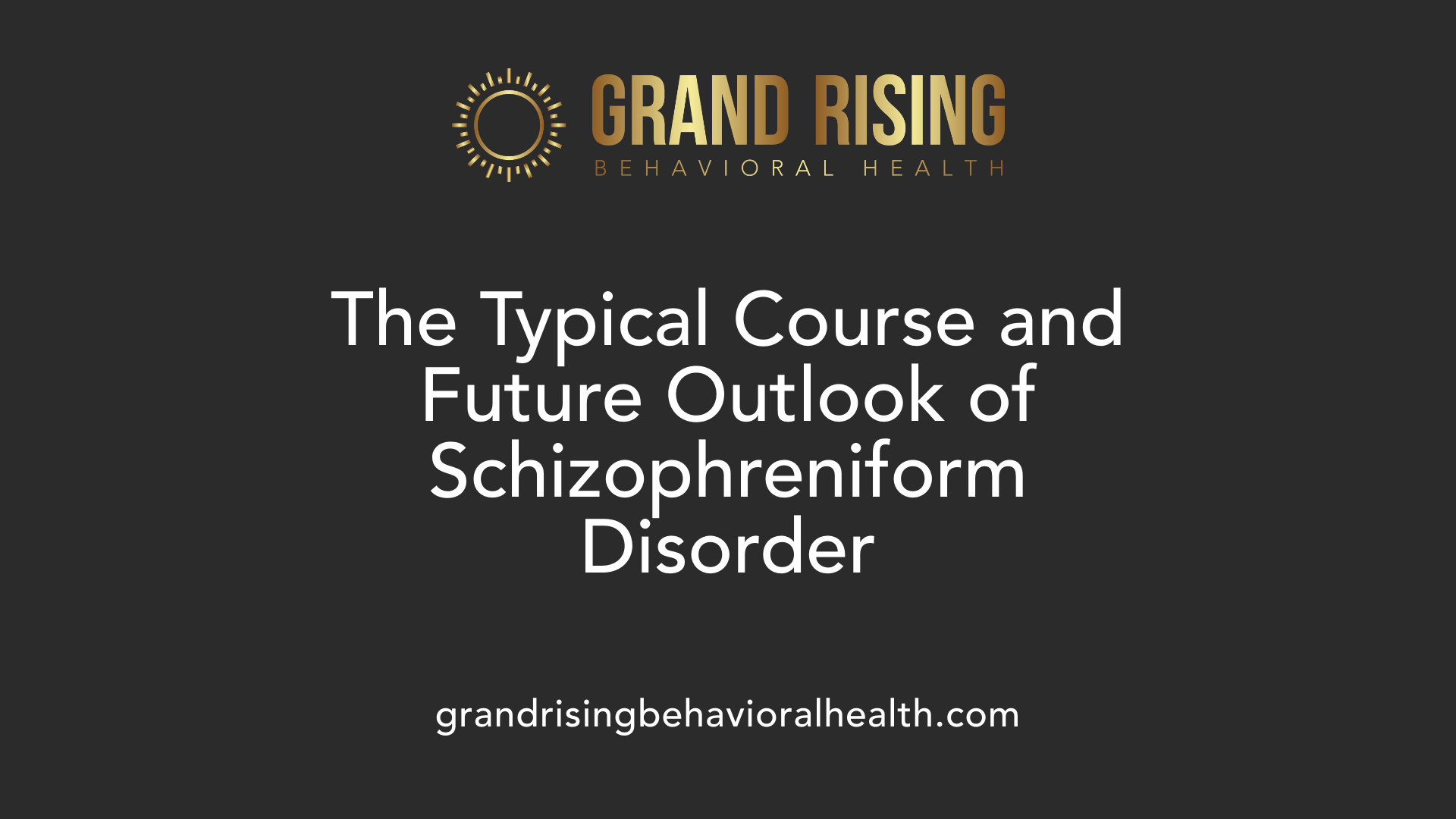
What is the typical course and prognosis of schizophreniform disorder?
The course of schizophreniform disorder usually involves symptoms lasting from one to six months. Many individuals experience full recovery within this timeframe, especially when they receive prompt and appropriate treatment such as antipsychotics and psychotherapy. Research indicates that approximately one-quarter of patients recover completely within six months, with minimal risk of psychiatric hospitalizations over subsequent years.
Compared to schizophrenia, the long-term outlook for schizophreniform disorder is generally more favorable. Most patients do not develop the chronic course associated with schizophrenia. However, about two-thirds of cases may progress to schizophrenia if symptoms extend beyond six months. Conversely, those with true schizophreniform disorder tend to have a better prognosis, with many returning to their baseline functioning.
Important prognostic features associated with positive outcomes include rapid onset of symptoms, good premorbid functioning, and a lack of negative symptoms like flat affect or social withdrawal. Shorter duration of symptoms before treatment and no prior history of mental illness are also favorable indicators.
Overall, schizophreniform disorder often exhibits a more benign course than schizophrenia, with characteristics that help clinicians distinguish it as a separate, often transient, clinical entity. Early diagnosis, treatment, and continuous monitoring are essential to support recovery and prevent progression.
How can clinicians predict which patients might transition to schizophrenia?
Predicting whether a patient with schizophreniform disorder will develop schizophrenia involves assessing several clinical features. Factors linked to a lower likelihood of progression include rapid onset of symptoms within four weeks, good social and occupational functioning before onset, and the presence of confusion or disorientation at the height of the episode. These features are considered markers of a better prognosis.
Conversely, several indicators suggest a higher risk of transitioning to schizophrenia. These include a longer duration of untreated symptoms, persistent negative symptoms such as social withdrawal and flat affect, and poor functioning in daily life. Patients exhibiting these signs need closer follow-up and ongoing assessment.
Clinicians often monitor these patients over the first few years after initial diagnosis. Regular evaluation allows identification of early signs of deterioration or fluctuation in symptoms. Early intervention strategies targeted at high-risk individuals can potentially prevent or delay the full emergence of schizophrenia.
In summary, careful assessment of symptom onset, functioning, and symptom profile, combined with longitudinal monitoring, enables clinicians to better predict and manage the risk of progression.
| Topic | Description | Additional Details |
|---|---|---|
| Remission rates | Many patients recover fully within six months | About 25% recover within this period, especially with early treatment |
| Progression to schizophrenia | Approximately two-thirds may become schizophrenic | Duration of symptoms, negative symptoms, and functioning influence risk |
| Prognostic features | Rapid onset, good premorbid status, confusion at peak | Longer symptoms, negative symptoms, poor social function increase risk |
Continuing research aims to refine predictors and improve intervention timing to optimize long-term recovery for patients with schizophreniform disorder.
Management and Treatment Strategies
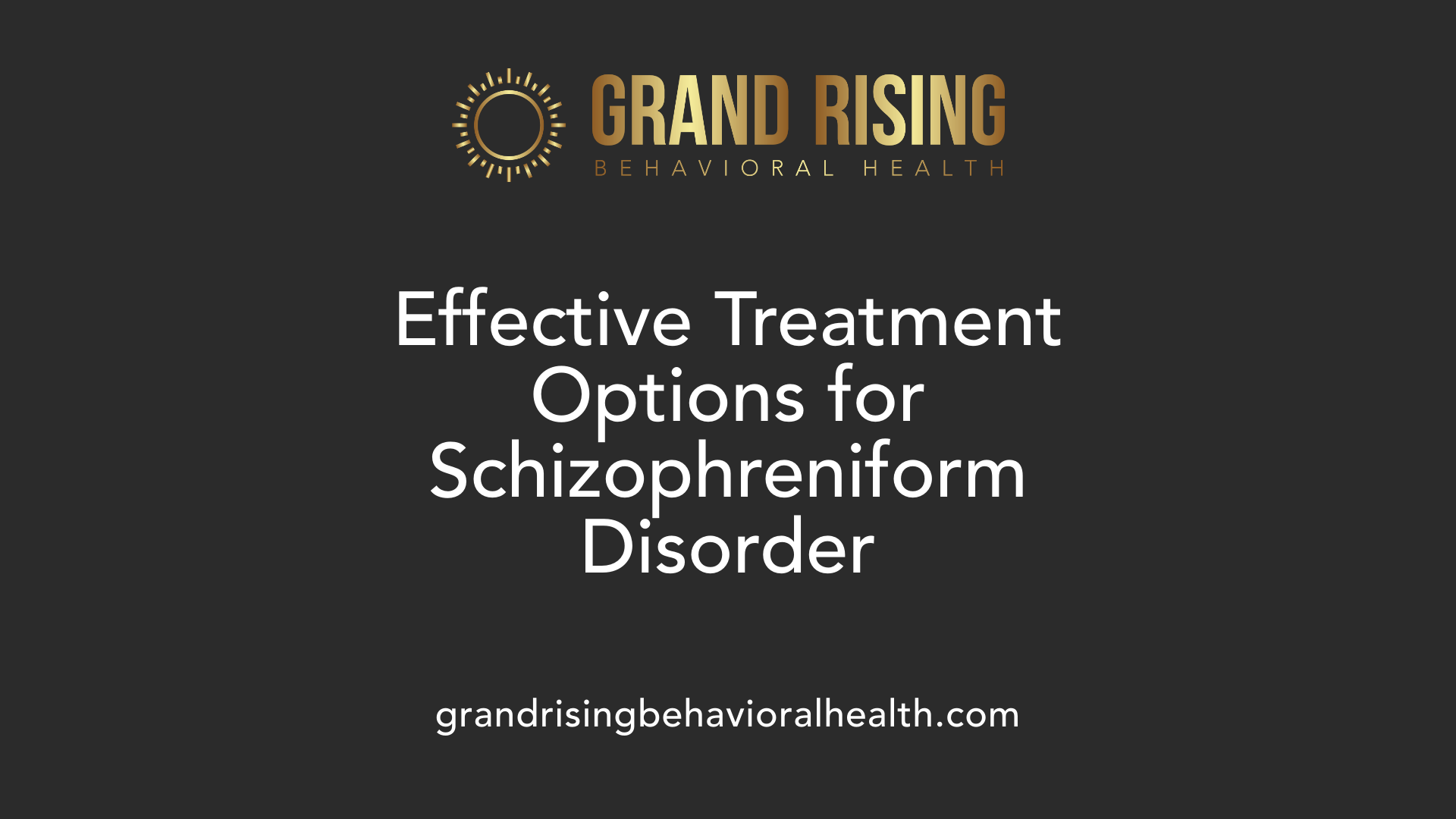
What are the treatment options for schizophreniform disorder?
Treating schizophreniform disorder involves a multifaceted approach focused on alleviating symptoms, preventing transition to schizophrenia, and supporting recovery.
Pharmacotherapy is the cornerstone of treatment. Antipsychotic medications such as risperidone, olanzapine, quetiapine, and ziprasidone are commonly prescribed to control psychotic symptoms like hallucinations and delusions. These medications help stabilize brain chemistry and reduce the severity of symptoms.
Psychotherapy also plays a crucial role. Cognitive-behavioral therapy (CBT) helps patients understand their condition and develop strategies to cope with symptoms. Family therapy can improve communication, provide education, and foster a supportive environment, which is vital for recovery.
Supportive care includes psychoeducation for patients and families, ensuring a good understanding of the disorder, and fostering adherence to treatment plans. Social and occupational therapies are often incorporated to help regain and maintain social functioning.
In some cases, hospitalization may be necessary, particularly if there is a risk of harm to oneself or others, or if symptoms severely impair daily functioning. This setting allows close monitoring and management of acute symptoms.
Electroconvulsive therapy (ECT) is rarely used but may be considered when medication trials fail or if symptoms are life-threatening.
Overall, the goal of treatment is to manage acute symptoms, reduce the risk of progression to schizophrenia, and facilitate a return to normal functioning. Combining medications, therapy, and social support offers the best outlook for recovery and long-term management.
For more detailed information, search with the query: "treatment options for schizophreniform disorder".
Prognostic Features and Early Intervention Importance
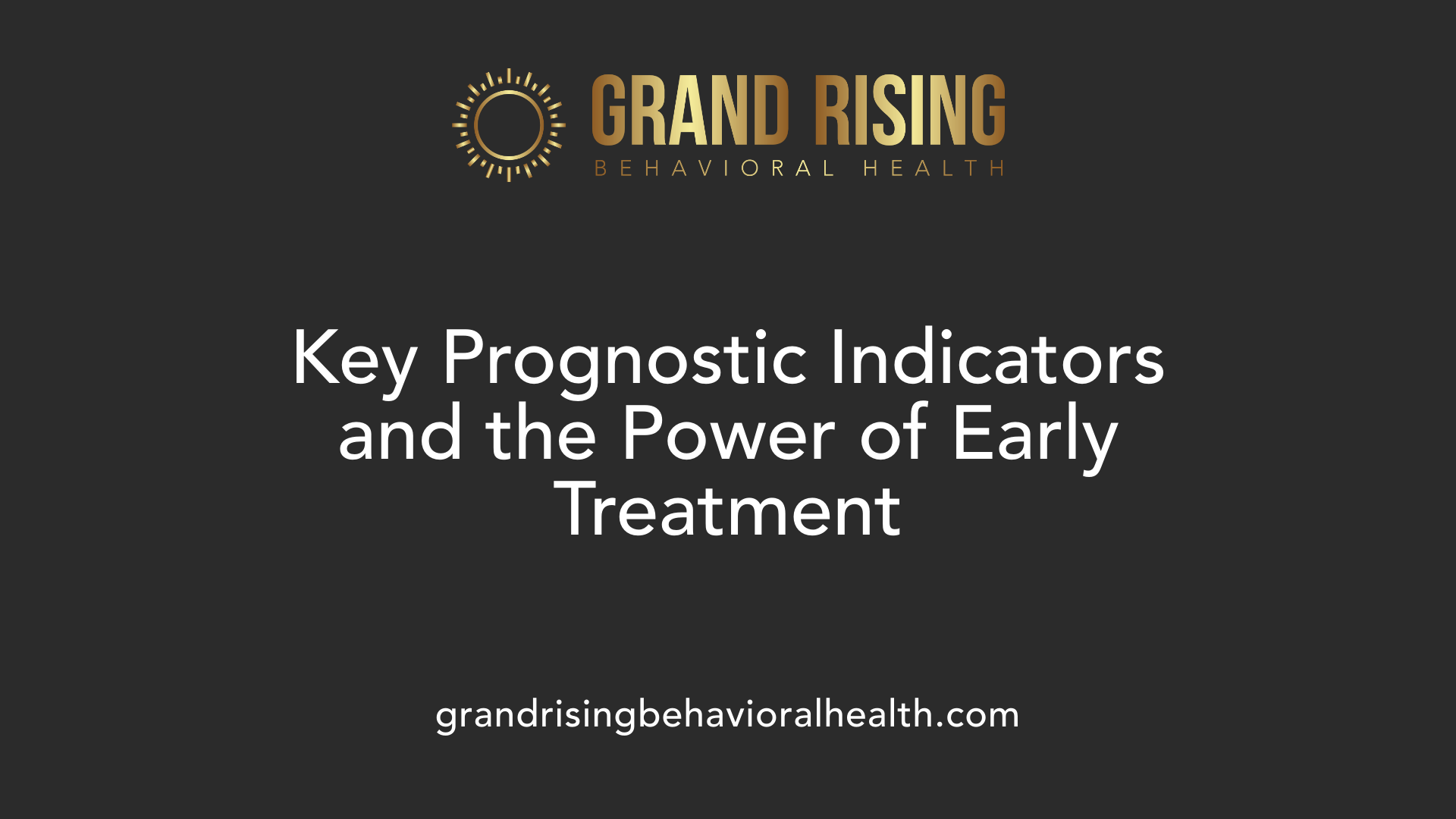
What are the prognostic features that influence outcomes in schizophreniform disorder?
Certain features seen during the initial phases of schizophreniform disorder can predict better outcomes. These include an early onset of symptoms within the first four weeks, which often indicates a more benign form of psychosis. Good premorbid functioning, meaning the individual was functioning well socially and occupationally before symptoms appeared, also suggests a more favorable prognosis.
Additionally, patients who exhibit confusion or perplexity during their active episodes tend to recover more fully. Such features imply that the disorder might be more transient and less likely to develop into a chronic condition like schizophrenia.
Conversely, factors such as delayed diagnosis, persistent negative symptoms (like social withdrawal and lack of motivation), and ongoing difficulties in social or occupational life can increase the risk of progression to schizophrenia.
How does early diagnosis impact outcomes?
Early detection and treatment are vital in managing schizophreniform disorder. Prompt intervention with antipsychotic medications and therapy can significantly reduce the severity and duration of symptoms.
Timely diagnosis allows clinicians to address symptoms before they become ingrained or complicated by additional mental health issues. It also provides an opportunity to implement psychosocial supports, thereby improving the individual’s overall functioning and quality of life.
Furthermore, early treatment can help prevent the disorder from transitioning into a more chronic psychotic disorder, such as schizophrenia. Regular monitoring during the initial months and years helps detect early signs of deterioration, enabling adjustments in therapy to optimize recovery.
| Factors Influencing Prognosis | Description | Impact | Additional Notes |
|---|---|---|---|
| Early onset (within 4 weeks) | Symptoms appear quickly after onset | Better outcome | Indicates a more transient illness |
| Premorbid functioning | Status before illness starts | Higher likelihood of remission | Good social and occupational history |
| Confusion during episodes | Presence of perplexity | Favors full recovery | Suggests less ingrained pathology |
| Delayed diagnosis | Diagnosis after symptoms persist | Poorer prognosis | May lead to irreversible changes |
| Persistence of negative symptoms | Low motivation, social withdrawal | Increases risk of progression | Negative symptoms are harder to treat |
| Early and continuous treatment | Prompt medical intervention | Improved chances of remission | Crucial for prognosis |
Effective management depends heavily on recognizing these features early and initiating comprehensive treatment strategies. Monitoring and addressing risks at each stage can lead to a more positive outcome and reduce the likelihood of transition to chronic disorders.
Key Takeaways and Future Directions in Schizophreniform Disorder
Schizophreniform disorder is a distinct yet closely related condition within the schizophrenia spectrum, characterized by a duration of psychotic symptoms lasting from one to six months. Its clinical features mirror those of schizophrenia, but its shorter course allows for a generally better prognosis, especially with early intervention. Accurate diagnosis hinges on carefully evaluating the duration of symptoms and ruling out other conditions like brief psychotic disorder or mood-related psychosis. While causes are multifaceted—encompassing genetic, neurobiological, and environmental influences—management primarily involves antipsychotic medications combined with psychosocial interventions. Most individuals recover fully, though a significant proportion may later develop schizophrenia if symptoms persist beyond six months. Ongoing research aims to refine prognostic markers and optimize early treatment, ultimately improving long-term outcomes and quality of life for affected individuals.
References
- Schizophreniform Disorder: What It Is, Symptoms & Treatment
- Schizophreniform Disorder - Psychiatric Disorders - Merck Manuals
- Schizophreniform Disorder - Medscape Reference
- Schizophreniform disorder - Wikipedia
- Distinguishing between first-admission schizophreniform disorder ...
- Brief Psychotic Disorder - StatPearls - NCBI Bookshelf
- Schizophreniform disorder: Symptoms, diagnosis, and treatment ...
- What Is Schizophreniform Disorder? - Verywell Mind
- Brief Psychotic Disorder vs Schizophreniform: What's the Difference?
More Resources
A team ready to start your journey.
Get in touch — today.
We are a safe space – a haven for exceptional individuals to receive discreet, personalized, in-person treatment and care.
.avif)










